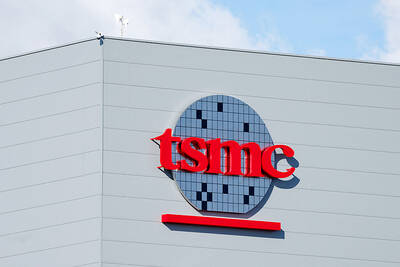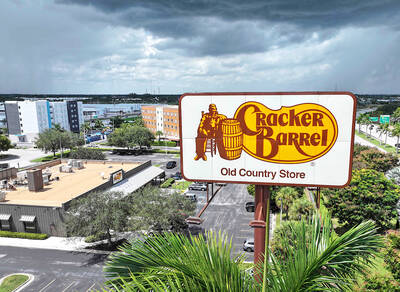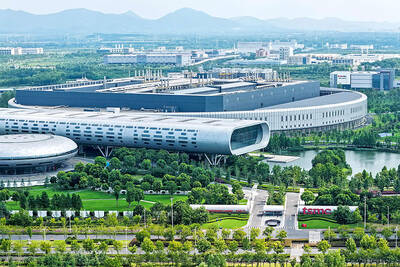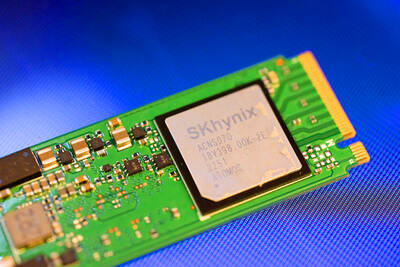Brazil’s central bank said on Friday it would ease banks’ reserve requirements, freeing up US$13 billion to stimulate lending and boost an economy facing its fourth consecutive year of sluggish growth.
The new measures, which would also loosen the rules on lending to small businesses, come as Brazilian President Dilma Rousseff looks to into October elections in which she is seeking a second four-year term.
“The central bank decided to adopt measures to improve the distribution of liquidity in the economy,” the bank said.
It attributed the move to “recent moderation in credit concessions, relatively low levels of default and the reduction of risk levels in the financial system.”
It said there was extra room for maneuver because total reserves in the banking system had risen from around US$87 billion in 2009 to nearly US$182 billion now, including a US$22.4 billion increase in the past 12 months.
Under the new rules, banks would be allowed to use up to 50 percent of reserves for credit operations, new loans and diversified investment portfolios.
The central bank also changed the way it calculates the reserves banks must hold to cover their outstanding loans, basing the amount on the number of payments remaining rather than the total term of the loan.
That could free up an additional US$6.7 billion, officials estimated.
Rules for lending to the small business sector were also eased.
Brazil’s economy registered a growth rate of 7.5 percent in 2010, the year Rousseff was elected to replace her popular predecessor and mentor, former Brazilian president Luiz Inacio Lula da Silva.
However, the economy has since cooled, growing just 2.7 percent in 2011, 1 percent in 2012 and 2.5 percent last year.
Analysts forecast growth of 1 percent this year, with only a minor, temporary boost from hosting the FIFA World Cup, this month and last month.
The central bank is meanwhile fighting to contain rising prices.
Annual inflation came in at 6.52 percent last month, breaking the government’s target ceiling of 6.5 percent. The bank has tried to tame prices by increasing the benchmark interest rate to 11 percent.
However, the new stimulus measures is likely to increase inflation.
“We are seeing contradictory messages from the central bank. On the one hand, they are keeping interest rates high, but on the other hand they are freeing up liquidity,” said Andre Perfeito, the chief economist at investment firm Gradual Investimentos.
The plan could also backfire, he added.
“It’s not so easy. We’ll see if banks want to lend more money or if families and companies want to take it. Business and consumer confidence levels are low,” he said.

Taiwan Semiconductor Manufacturing Co (TSMC, 台積電) secured a record 70.2 percent share of the global foundry business in the second quarter, up from 67.6 percent the previous quarter, and continued widening its lead over second-placed Samsung Electronics Co, TrendForce Corp (集邦科技) said on Monday. TSMC posted US$30.24 billion in sales in the April-to-June period, up 18.5 percent from the previous quarter, driven by major smartphone customers entering their ramp-up cycle and robust demand for artificial intelligence chips, laptops and PCs, which boosted wafer shipments and average selling prices, TrendForce said in a report. Samsung’s sales also grew in the second quarter, up

On Tuesday, US President Donald Trump weighed in on a pressing national issue: The rebranding of a restaurant chain. Last week, Cracker Barrel, a Tennessee company whose nationwide locations lean heavily on a cozy, old-timey aesthetic — “rocking chairs on the porch, a warm fire in the hearth, peg games on the table” — announced it was updating its logo. Uncle Herschel, the man who once appeared next to the letters with a barrel, was gone. It sparked ire on the right, with Donald Trump Jr leading a charge against the rebranding: “WTF is wrong with Cracker Barrel?!” Later, Trump Sr weighed

LIMITED IMPACT: Investor confidence was likely sustained by its relatively small exposure to the Chinese market, as only less advanced chips are made in Nanjing Taiwan Semiconductor Manufacturing Co (TSMC, 台積電) saw its stock price close steady yesterday in a sign that the loss of the validated end user (VEU) status for its Nanjing, China, fab should have a mild impact on the world’s biggest contract chipmaker financially and technologically. Media reports about the waiver loss sent TSMC down 1.29 percent during the early trading session yesterday, but the stock soon regained strength and ended at NT$1,160, unchanged from Tuesday. Investors’ confidence in TSMC was likely built on its relatively small exposure to the Chinese market, as Chinese customers contributed about 9 percent to TSMC’s revenue last

LOOPHOLES: The move is to end a break that was aiding foreign producers without any similar benefit for US manufacturers, the US Department of Commerce said US President Donald Trump’s administration would make it harder for Samsung Electronics Co and SK Hynix Inc to ship critical equipment to their chipmaking operations in China, dealing a potential blow to the companies’ production in the world’s largest semiconductor market. The US Department of Commerce in a notice published on Friday said that it was revoking waivers for Samsung and SK Hynix to use US technologies in their Chinese operations. The companies had been operating in China under regulations that allow them to import chipmaking equipment without applying for a new license each time. The move would revise what is known